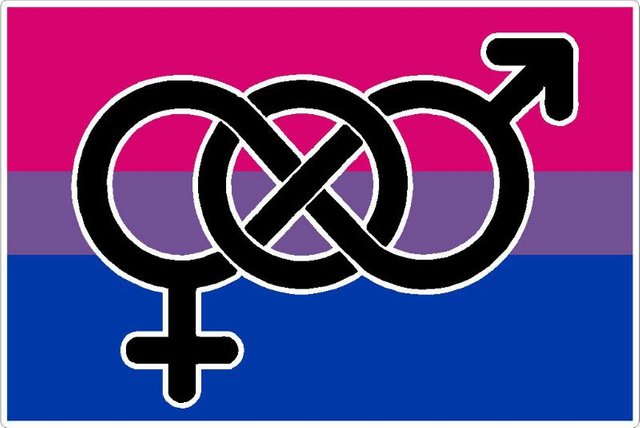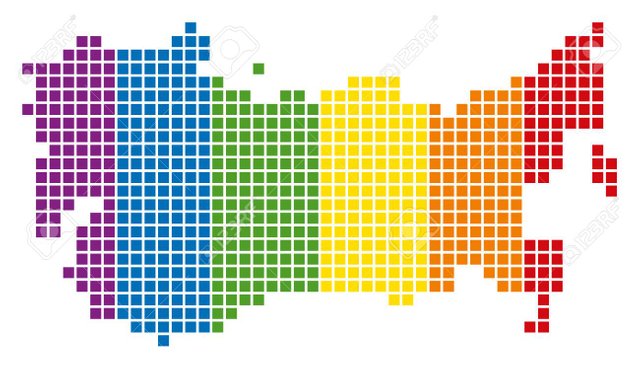Getting to know what is bisexual? who are bisexuals? Confused
Bisexuality is romantic attraction, sexual attraction, or sexual behavior toward both males and females, or romantic or sexual attraction to people of any sex or gender identity; this latter aspect is sometimes alternatively termed pansexuality.

There is a lot of confusion about the concept of bisexuality. Many people are 100% gay or lesbian, in other words they are sexually and emotionally attracted only to partners of the same sex. Others are completely heterosexual, bonding in sexual and intimate relationships only with people of another sex. But what about everybody else? A significant percentage of people do not fit neatly into either of these categories, because they experience sexual and emotional attractions and feelings for people of different genders at some point during their lives. For lack of a better term, they are called bisexuals. Many people hate this term, for a variety of reasons, and prefer to call themselves “pansexual,” “non-preferential,” “sexually fluid,” “ambisexual,” or simply “queer.” This is particularly true for young people under the age of 40, who consider the term “bisexual” to be outdated and limiting, and do not identify with this lable at all. Since there is no consensus on this terminology and no other widely-accepted term has yet emerged, I will use “bisexual” in this discussion to describe everyone who does not identify as completely straight or completely gay.

WHO IS BISEXUAL?
There is no simple definition of bisexuality, and bisexual people are a very diverse group. There are several theories about different models of bisexual behavior. J. R. Little is a psychologist whose extensive research identified at least 13 types of bisexuality, as defined by the seven factors on the Klein Grid. They are:
Alternating bisexuals: may have a relationship with a man, and then after that relationship ends, may choose a female partner for a subsequent relationship, and many go back to a male partner in the future.
Circumstantial bisexuals: primarily heterosexual, but will choose same sex partners only if they have no access to other-sex partners, such as when in jail, in the military, or in a gender-segregated school.
Concurrent relationship bisexuals: have primary relationship with one gender only but have other casual or secondary relationships with people of another gender at the same time.
Conditional bisexuals: either straight or gay/lesbian, but will switch to a relationship with another gender for a specific purpose, such as young straight males who become gay prostitutes to make money or lesbians who get married to men in order to gain acceptance from family members or to have children.
Emotional bisexuals: have deeply intimate emotional relationships with both men and women, but only have sex with one gender.
Integrated bisexuals: have more than one primary relationship at the same time, one with a man and one with a woman.
Exploratory bisexuals: either straight or gay/lesbian, but have sex with another gender just to satisfy curiosity or “see what it’s like.”
Hedonistic bisexuals: primarily straight or gay/lesbian but will sometimes have recreational sex with a different gender purely for sexual satisfaction.
Recreational bisexuals: primarily heterosexual but engage in gay or lesbian sex only when under the influence of drugs and/or alcohol.
Isolated bisexuals: 100% straight or gay/lesbian now but has had at one or more sexual experience with another gender in the past.
Latent bisexuals: completely straight or gay lesbian in behavior, they have strong desire for sex with another gender but have never acted on it.
Motivational bisexuals: straight women who have sex with other women to please their male partner who requests it for his own titillataion.
Transitional bisexuals: temporarily identify as bisexual while in the process of moving from being straight to being gay or lesbian, or going from being gay or lesbian to being heterosexual.
STAGES OF BISEXUAL IDENTITY
Dr. Mary Bradford is a psychologist and author of The Bisexual Experience: Living in a Dichotomous Culture. Her ground-breaking research identified at least four steps or stages that bisexuals go through to fully acknowledge and become comfortable with their identities as bisexuals.
- Confusion over sexual orientation.
Most bisexual people start out feeling very confused about their attraction towards people of both sexes, wondering “Is something wrong with me?”Some spend their entire lives in this stage, hiding their sexual orientation, feeling isolated and alone with the inner turmoil over their “dual attractions.” Many go through life identifying as straight, or as gay or lesbian in order to be accepted and fit in. Because their own experience does not conform to either community, they feel intense pressure to choose one and identify with it. Without any language to frame their own reality, and no visible role models or community available to them, bisexual people must have sufficient self-confidence and belief in their own identity in order to eventually transcend this stage. People in their teen's and 20's are now able to move through this phase much more quickly because openly bisexual adults have become much more common in recent years. As a result, these young people have more role models and feel more comfortable with their sexual orientation.
- Discovery of the bisexual label and choosing to identify as bisexual.
Most bisexual people say that discovering the label “bisexual” was pivotal in understanding and accepting their sexual orientation. Most experience relief when they hear the word “bisexual” for the first time, because they finally have a word that mirrors their experience and feelings. For some, the negative stereotypes of bisexuals as “promiscuous,” neurotic, or vectors of AIDS, prevent them from identifying with the label or claiming it for themselves, but many agree that it comes closer than any other term to describing their lives. Instead of rejecting the label, many invent their own definition and create bisexual lifestyles that fit their individual lives. Ironically, younger bisexuals seem most contemptuous of the label “bisexual,” as it seems very quaint, dated, and irrelevant to them. Some use the more general term “queer” to describe their orientation. And because many younger people are more gender-fluid or have transitioned from one gender to another, many do not apply any label to their sexual orientation.
- Settling into and maintaining a bisexual identity.
For many, this step is the most difficult. While they feel good about being bisexual, they experience extreme conflict living in the real world as bisexual. Many discover it is not acceptable to talk about their bisexuality in most circles, especially in their work lives and in their family lives. Often rejected by family members, friends, and co-workers, even spouses or potential partners because they are bisexual, they find that to develop and maintain a bisexual identity requires inner strength, self-reliance, and confidence. Many overcome these obstacles by forming their own community and finding accepting friends and lovers.
- Transforming adversity.
For most bisexuals, coming out and staying out of the closet is an on-going process which must be repeated with every new social situation, workplace, friend, or lover. Many see this process as the most important form of political action, creating visible role models and a cohesive bisexual community. Because most bisexuals have suffered through the first three stages alone and in silence, they want to make it easier for other bisexuals to recognize and embrace their sexual orientation without years of turmoil and loneliness. Many also get involved in bisexual political organizations as a way to increase bisexual visibility and promote bisexuality as a viable identity. Just as gay men and lesbians were only able to win some rights through organizing and being visible in both the social and political arenas, bisexuals will only win acceptance through coming out of the closet and living their lives openly.
info from: http://www.kathylabriola.com/articles/what-is-bisexuality-who-is-bisexual